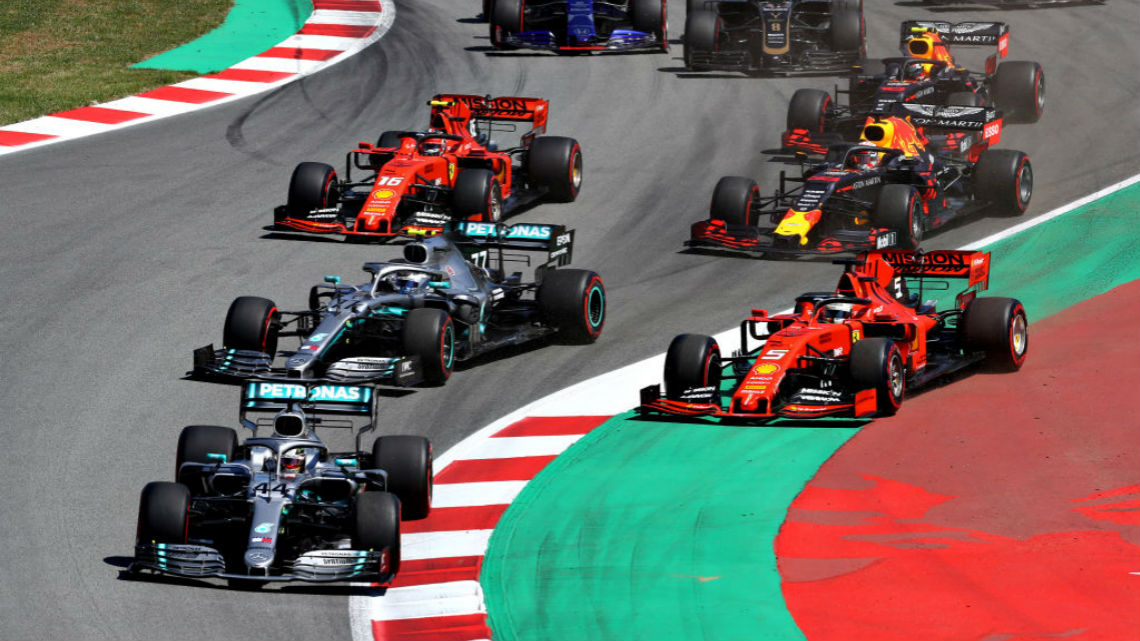As the Formula1 season is currently delayed from Coronavirus, now is a perfect time for the “average American sports fan” to learn about arguably the world’s most exciting sport.
F1, each season, travels to 22 destinations around the globe, with 500 million fans all focusing on the 20 drivers and the 10 teams, as they fight to win the holy grail of motorsports, The Formula1 World Championship.
Formula1 is much more than “cars in a loop”, like you’ve probably seen in NASCAR. The courses are extreme, and travel through the most beautiful public roads in cities across the world.

Monaco Grand Prix track satellite view
Anyone with a passion for:
- Future technology
- Brakes that get as hot as molten lava
- NASA level G forces (acceleration)
- Budgets in the hundreds of millions
- and of course… extremely fast cars
Kimmi Raikkonen currently holds the speed record at over 235 MPH; but here’s a comparison of the two fastest laps in history:
But top speed isn’t what F1 is actually all about.
The fastest accelerating production car (something you’d see on your street) is the Porsche 918 which hits 60mph in 2.4 seconds.
That’s fast right?
Well a modern F1 car can do it in just 1.6 seconds. What’s even more impressive, is that an F1 car can accelerate all the way up to 200 MPH and then brake to a standing stop in only 6.1 seconds.
The effects on a car going up to 200 MPH and then back to zero are severe.
I mentioned F1 is the most insane sport on the planet, but just how insane is it really?
To start, the carbon fiber brake discs reach up to 2200 degrees Fahrenheit. 2200 degrees Fahrenheit is how hot molten lava gets, for reference.
The drivers who are piloting these cars experience up to 6G’s as they enter turns. That’s literally more g-forces then NASA Astronauts feel when they take off from the launch pad, so it’s no wonder F1 drivers train like NASA astronauts.
The drivers must wear a fire suit under their racing suit. Their cockpits reach temps of up to 122 degrees. F1 drivers on average lose about 7 pounds during each race.
The cost of these F1 high tech machines is astronomical.
Front wings get damaged, scraped and completely ripped off frequently over a race season and sometimes over just one race weekend. To replace the front wing is $185,000.
To replace the gear box during a race weekend isn’t just a 5 position grid penalty (lose 5 places in the race) but also costs $920,000. The steering wheel alone is $200k.
The car all together with the tires, Engine, brakes, bodywork etc. is estimated to cost upwards of 12 million dollars. The annual F1 team budgets to develop, test and build these cars range from 120 million to 500 million dollars.
If you’re still hooked onto learning about the phenomenons of F1, let’s take a dive into it’s amazing evolution.
The 1950s brought cars built around steel frames and the engines in front of the driver, who sported a cloth cap before crash helmets were invented.

The 60’s had Lotus working on a rigidity using tubular space frame chassis, with engines bolted to the rear for better handling. Soon, wings front and rear arrived.
The quantum leap came in the 80’s when McLaren designed a carbon fiber monocoque chassis, creating a survival cell for the driver. Aerodynamics and supercomputers soon began to dictate design. The F1 turbo hybrid energy era begin in 2014
F1 is currently In the turbo hybrid era which is a Hybrid V6 turbo engine, but F1 cars haven’t always been turbo six cylinders. Old school F1 fans long for the days of the throaty roaring V12’s of the mid 90’s or the screaming V10’s of the early 2000’s or the ear piercing high revving V8’s, that these current hybrid V6 motors replaced.
That being said, these smaller six cylinder motors scream up to 15,000 RPM and deliver about 1000 horse power.
In 2018 F1 integrated a halo to protect the drivers. The halo is a crash protection system which consists of a curved bar placed to protect the driver’s head. The halo is mandatory on every car in F1.
Constructed from aerospace industry grade titanium, it can withstand the weight of 26,000 pounds. It is the strongest part of the car but weighs only 15 pounds.
If this 2020 season gets to start this year, I look forward to seeing the drivers and teams push the boundaries of tech and speed as they do every year, and covering the races for Phenom Media!
Photo: LifeGate






